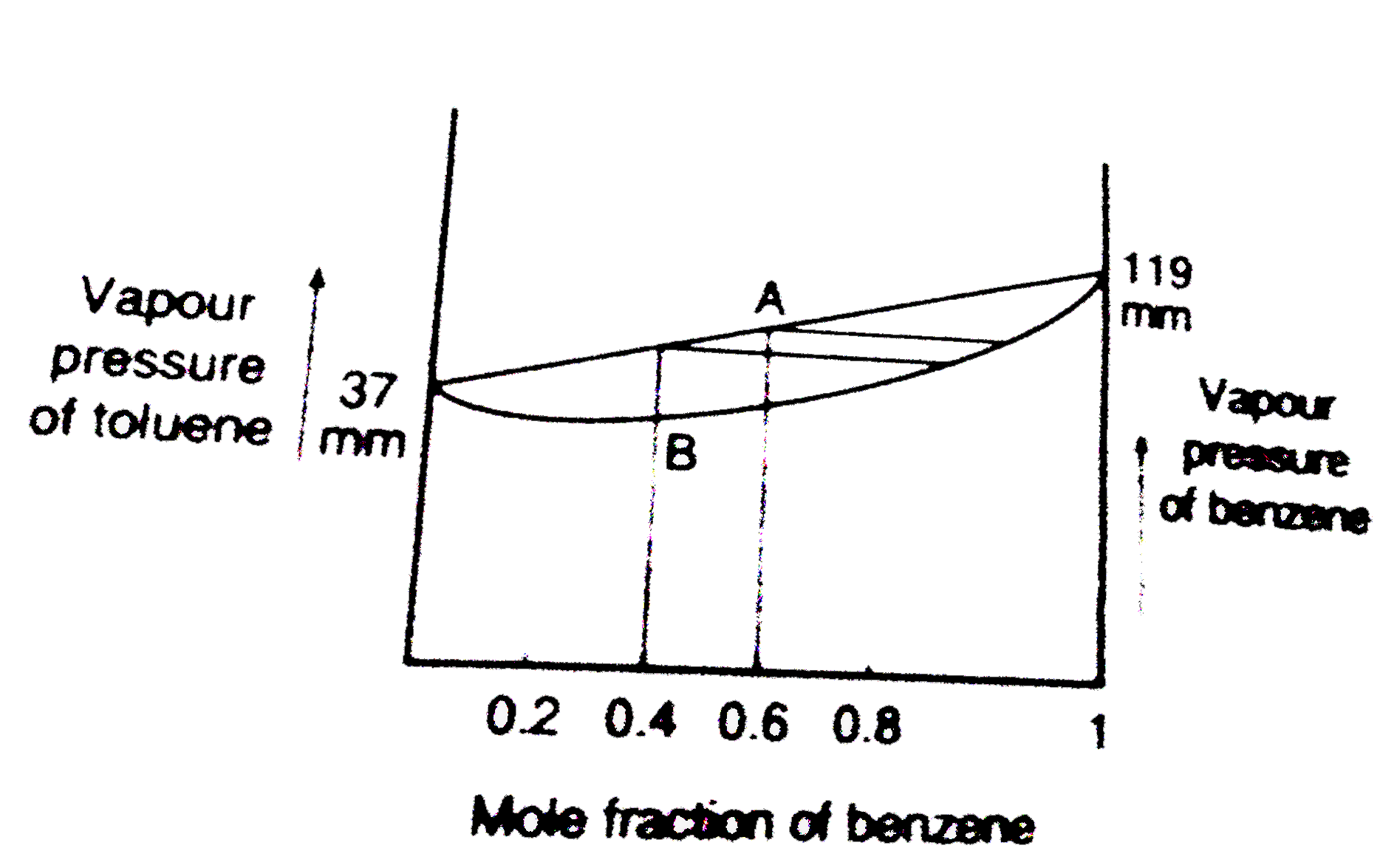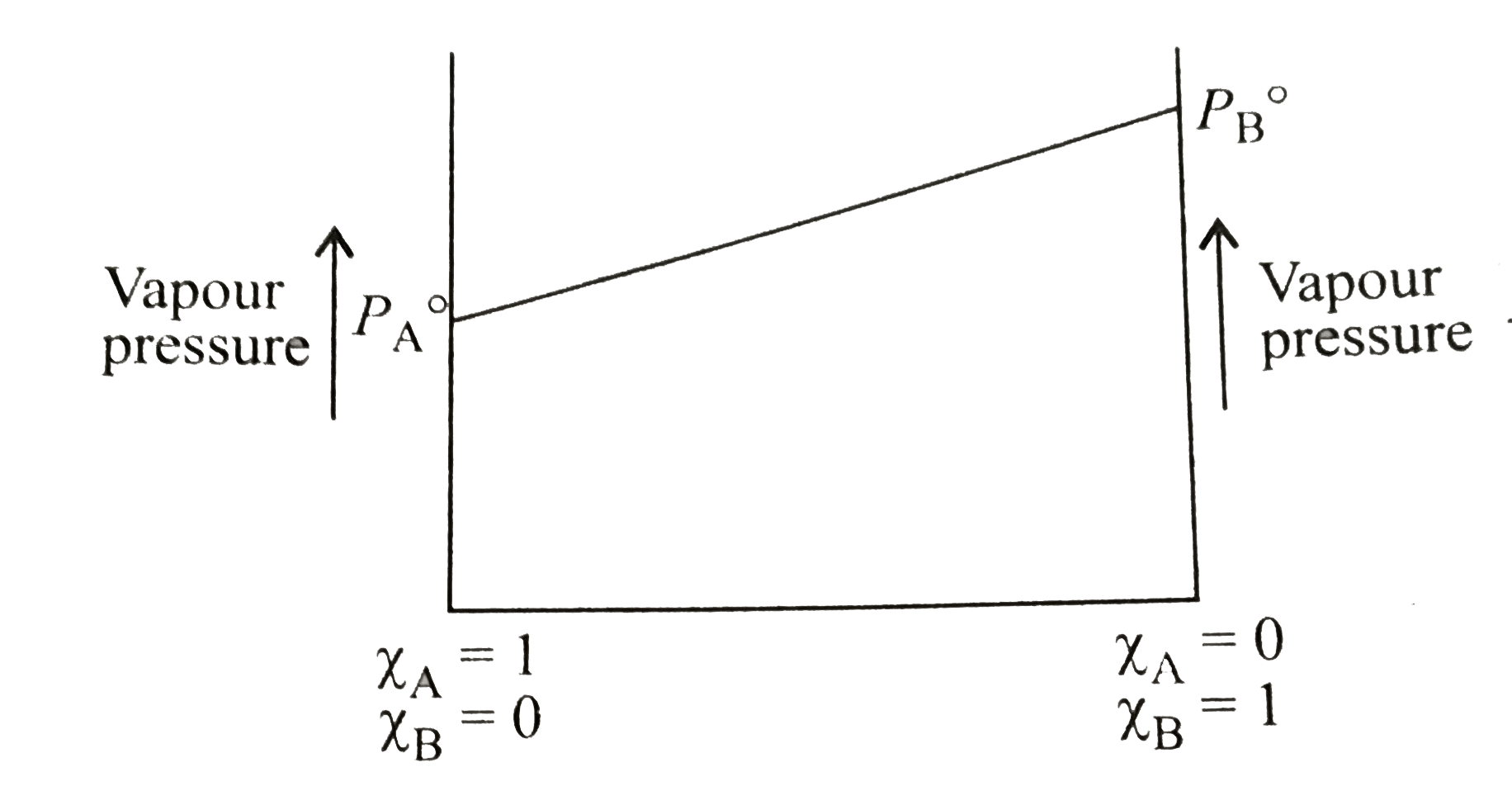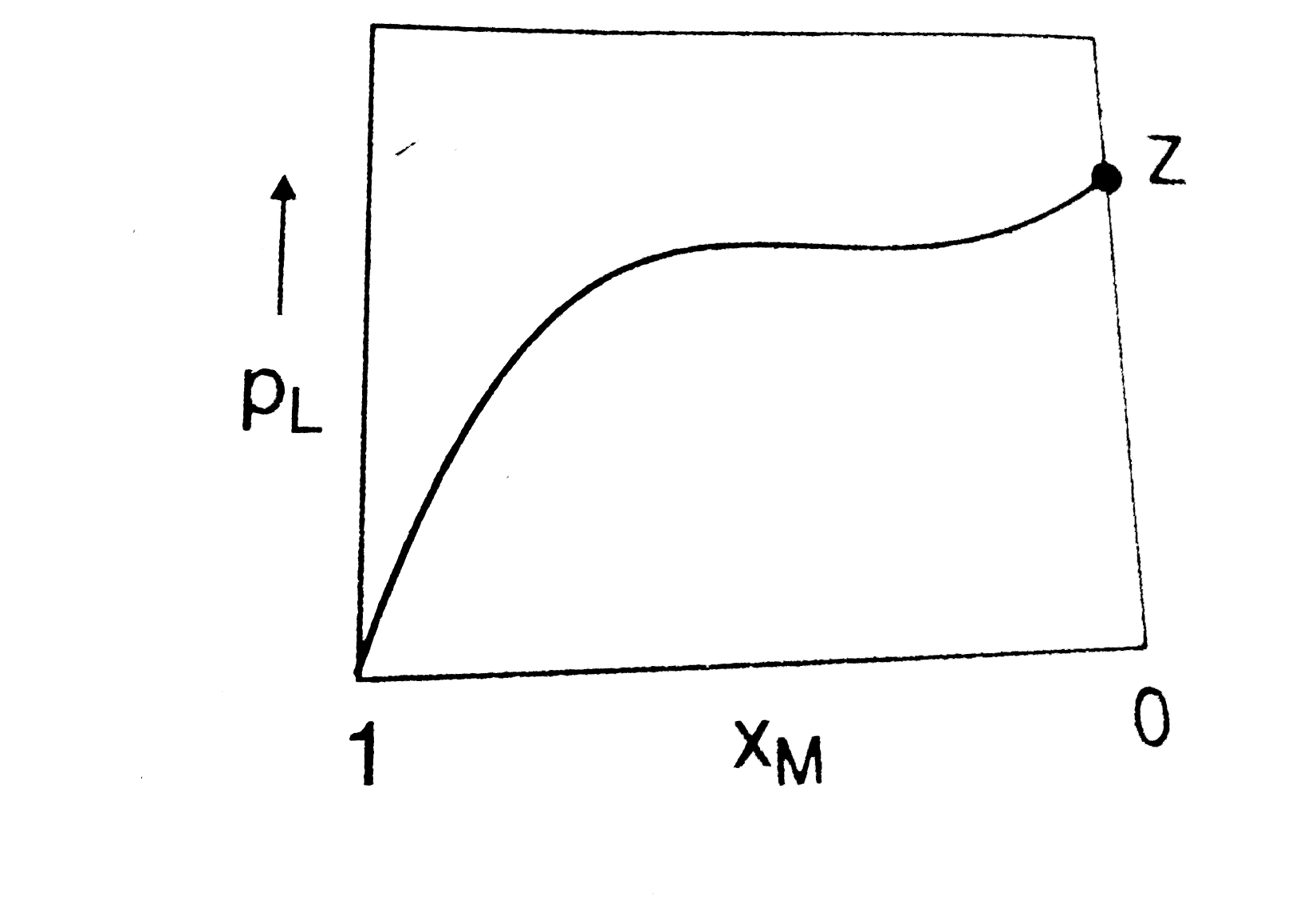Complete Solutions to Level-B of chapter SOLUTIONS (GENERAL AND COLLIGATIVE PROPERTIES) of Class 11 book with complete answers and questions
| Class 11 | CHEMISTRY |
| Chapter | SOLUTIONS (GENERAL AND COLLIGATIVE PROPERTIES) |
| OP TANDON | Level-B |
| Number Of Questions | 53 |
| Academic Year | 2023-24 |
Three solution of HCl having normalities 12 N, 6N and 2 N are mixed to obtain a solution of 4 N normality. Which among the following volume ratio is correct for the above three components ?
02:05View Solution6.8 g `H_(2)O_(2)` is dissolved in 224 mL solution. This solution will be labelled as:
02:23View SolutionA solution weighing `a` g has molality `b`. The molecular mass of solute if the mass of solute is c g, will be:
02:50View SolutionTwo solution of `H_(2)SO_(4)` of molarities x and y are mixed in the ratio of `V_(1) mL : V_(2) mL` to form a solution of molarity `M_(1)`. If they are mixed in the ratio of `V_(2) mL : V_(1) mL`, they form a solution of molarity `M_(2)`. Given `V_(1)//V_(2) = (x)/(y) gt 1 and (M_(1))/(M_(2)) = (5)/(4)`, then `x : y` is
03:28View SolutionYou are given 500 mL of 2 N HCl and 500 mL of 5 N HCl. What will be the maximum of 3 M HCl that you can make from these two solution?
View SolutionThe mole fraction of a given sample of `I_(2) " in " C_(6)H_(6) " is " 0.2`. The molality of `I_(2) " in " C_(6) H_(6)` is:
01:53View SolutionA 15 - volume sample of an `H_(2)O_(2)` solution is equivalent to:
00:56View SolutionIf `P_(A)` is the vapour pressure of a pure liquid A and the mole fraction of A in the mixture of two liquids A and B is x, the parial vapour pressure of A is:
01:37View SolutionA difference between diffusion and osmosis is
02:09View Solution
Choose the correct option:View SolutionInsulin `(C_(2)H_(10)O_(5))_(n)` is dissolved in a suitable solvent and the osmotic pressure `(pi)` of solutions of various concentrations `(g//cm^(3))C` is measured at `20^(@)C`. The slope of a plot of `pi` against `C` is found to be `4.65 xx 10^(-3)`. The molecular weight of insulin is:
02:43View SolutionSolubility of deliquescent substances in water is generally:
01:39View SolutionConsider the follwing vapour pressure composition graph. `SP` is equal to:
a. `PQ + RS`m , b. `PQ + QR` , c. `SR + SQ` , d. PQ + QR + RS
 02:13View Solution
02:13View SolutionY g of non-volatile organic substance of molecular mass M is dissolved in 250 g benzene . Molal elevation constant of benzene is `K_(b)` . Elevation in its boiling point is given by :
01:30View SolutionWhich of the following represents correcty the changes in thermodynamic properties during the formation of 1 mole of an ideal binary solution :
05:01View SolutionA solute forms a pentamer when dissolved in a solvent. The van't Hoff factors 'I' for the solute will be :
01:21View SolutionWhat is the molarity of HCl in a solution prepared by dissolving 5.5 g HCl in 200 g ethanol if the density of the solution is 0.79 `g mL^(-1)`?
02:21View SolutionWhich statement about the composition of vapour over an ideal `1 : 1` molar mixture of benzene and toluene is correct ? Assume the temperature is constant at `25^(@)C`
Vapour pressure data `(25^(@)C)`:
`{:("Benzene",75 mm Hg,),("Toluene",22 mm Hg,):}`02:18View SolutionWhen `1.20g` of sulphur is melted with `15.00g` of naphthalene, the solution freezes at `77.2^(@)C`. What is the moalr mass of this from of sulphur. Data for Napthalene
Melting point, m.p `80^(@)C`
Freezing point depression constant, `k_(f) = 6.80^(@)Cm^(-1)`02:50View SolutionWhich of the following concentration factors can be calculated if the mole fraction and density of an aqueous solution of `HCl` are known ?
01:32View SolutionThe vapour pressure of a liquid in a closed container depends on:
(1) temperature of liquid (2) quantity of liquid (3) surface area of the liquid02:19View SolutionA solution prepared by dissolving a 2.50 g sample of an unknown compound dissolved in `34.0` g on benzene , `C_(6)H_(6)` , boils `1.38^(@) C ` higher than pure benzene . Which expression gives the molar mass of the unknown compound ?
 02:11View Solution
02:11View SolutionIf liquids A and B from an ideal solution
01:57View SolutionSolute A is a ternary electrolyte and solute B is a non-electrolyte. If 0.1 M solution of B produces an osmotic pressure of 2P at temperature 3T K then 0.05 M solution of A at T K will produce an osmotic pressure of:
02:49View SolutionWhich of the following behaviours is true for an ideal binary liquid solution?
02:29View SolutionTotal Vapour pressure of mixture of 1molA`(p_(A)^(0)=150 "torr")`and 2molB `(p_(B)^(0)=240 "torr")`is `200 "torr"`. In this case
01:59View SolutionA compound `MX_(2)`has observed and normal molar masses `65.6 and 164`respectively .Calculated the apparent degree of ionization of `MX_(2)`:
02:51View SolutionCompound `PdCl_(4). 6H_(2)O` is a hydrated complex, 1 molal aqueous solution of it has freezing point 269.28 K. Assuming 100% ionization of complex, calculate the molecular formula of the complex (`K_(f)` for water = 1.86 K `mol^(-1)`)
03:11View SolutionInsulin is dissolved in suitable solvent and the osmotic pressure `(pi)` of solution of various concentration `(g//cm^(3))` C is measured at `27^(@)C`. The slope of plot of `pi` against C is found to be `4.1 xx 10^(-3)`. The molecular mass of inulin is:
02:46View Solution`pH` of a `0.1 M` monobasic acid is found to be `2`. Hence, its osmotic pressure at a given temperature T K is
02:37View SolutionCalculate the amount of ice that will separate out on cooling containing `50 g `of ethylene glycol in `200 g` of water to `-9.3^(@)C (K_(f)` for water =`1.86 K mol^(-1) kg`)
02:57View Solution2 moles each of liquids A and B are dissolved to form an ideal solution. What will be the mole fraction of B in the vapour phases ?
`p_(A)^(@) = 120 " torr ", p_(B)^(@) = 80` torr01:46View SolutionLowering of vapour pressure due to a solute in `1` molal aqueous solution at `100^(@)C` is
a.`13.44 mm Hg` ,b. `14.14 mm Hg` ,c.`13.2 mm Hg` ,d. `35.2 mm Hg`02:58View SolutionThe temperature at which molarity of pure water is equal to its molality is `:`
01:40View SolutionIsopiestic solution have:
View SolutionMolarity and molality of a solution of caustic soda are respectively ` 11.12 M ` and ` 94.12 m ` The density of the solution is
02:19View SolutionWhich of the following aqueous solution shas osmotic presseure nearest to that of an equimolar solution of `K_(4)[Fe(CN)_(6)]`
04:49View SolutionEqual mass of a soute are dissolved in equal mass of two solvents A and B and formed very dilute solution. The relative lowering of vapour pressure for the solution B has twice the relative lowering of vapour pressure for the solution A. If `m_(A) "and" M_(B)` are the molecules mass of solventds A and B respectively, then :
03:31View SolutionPure water freezes at 273 K and 1 bar. The addition of 34.5 g of ethanol to 500 g of water changes the freezing point of the solution. Use the freezing point depression constant of water as 2 K `kg mol^(-1).` The figures shown below represent plots of vapour pressure (V.P.) versus temperature (T). [molecular weight of ethanol is` 46 g mol^(-1)` Among the following, the option representing change in the freezing point is
03:38View SolutionConsider the following solutions:
I.1 M sucrose , II. 1 M KCl
III.1 M benzoic acid in benzene
IV.`1 M (NH_(3))_(3)PO_(4)`
Which of the following is/are true?05:05View SolutionThe osmotic pressure of a solution depends on
01:19View SolutionThe following is a graph plotted between the vapour pressure of two volatile liquids against their respective mole fractions. Which of the following statements is/are correct?
 03:20View Solution
03:20View SolutionWhich of the following combinations are correct for a binary solution, in which the solute as well as solvent are liquid?
06:50View SolutionA solution containing 0.1g of a non-volatile organic substance P (molecular mass 100) in 100g of benzene raises the boiling point of benzene by `0.2^(@)C`, while a solution containing 0.1 g of another non-volatile substance Q in the same amount of benzene raises the boiling point of benzene by `0.4^(@)C`. What is the ratio of molecular masses of P and Q ?
03:32View SolutionConsider 0.1 M solutions of two solutes X and Y. The solute X behaves as univalent electrolyte, while the solute Y dimerises in solution. Select correct statement(s) regarding these solutions:
02:50View SolutionFor a given value of degree of dissociation, which of the following have correct Van't Hoff factor?
02:36View Solution1 mol benzene `(P^(@)_("benzene")=42 mm)` and 2 mol toluence `(P^(@)_("toluene")=36 mm)` will have
03:02View SolutionThe decrease in freezing point of an aqueous solution of a substance is 1.395 K and that in the freezing point of a benzene solution of the same substance is 1.28 K. The substance :
01:53View SolutionThe vapour pressure of water at T (K) is 20 mm Hg. The following solution are prepared at T (K) :
I. 6g of urea (mol. Wt = 60) is dissolved in 178.2g of water
II. 0.01 mole glucose is dissolved in 179.82 g of water
III. 53g of `Na_(2)CO_(3)` (mo. wt. 106) is dissolved in 179.1g of water
Identify the correct order in which the vapour pressures of solutions increases :03:31View SolutionConsider lowering of vapour pressure `(Deltap)`, elevation in boiling point `(Delta T_(b))` and depression in freezing point `(Delta T_(f))` of a solvent for the same molar concentration of each of the following three solutes :
1. `BaCl_(2)`
2. `NaCl`
3. `MgCl_(2)`
Which of the following is/are the correct sequence ?01:41View SolutionBenzene and naphthalene form an ideal solution at room temperature. For this process,the true statement(s) is (are)
01:31View SolutionMixture (s) showing positive deviation from Raoult's law at `35^(@)C` is (are)
02:51View SolutionFor a solution formed by mixing liquids L and M, the vapour pressure of L plotted against the mole fraction of M in solution is shown in the following figure, Here `x_(L) and x_(M)` represent mole fraction of L and M, respectively in the solution, the correct statement(s) applicable to this system is (are) :
 View Solution
View Solution
Level-B questions and complete solutions for chapter SOLUTIONS (GENERAL AND COLLIGATIVE PROPERTIES) of G.R. BATHLA & SONS CHEMISTRY (HINGLISH) of Class 11
